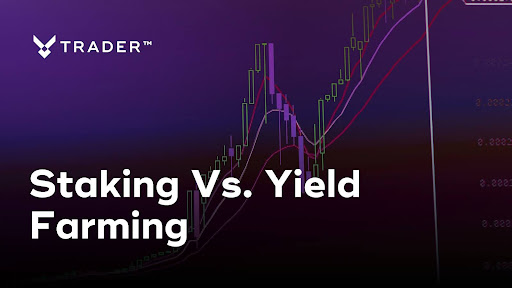Staking vs. Yield Farming: How to Make Your Crypto Work While You Sleep
You’re holding crypto. Great. But are you earning with it?
Staking and yield farming are two of the most popular ways to generate passive income in Web3. They’re different beasts, though—different risk levels, different strategies, and different outcomes.
You don’t need to be a DeFi degenerate to understand the basics. But you do need to know how to pick the right one for your goals.
Let’s walk through both.
What Staking Actually Is
Staking is simple. You lock up your tokens to help secure a Proof-of-Stake blockchain like Ethereum or Polkadot. In return, you earn rewards.
That’s it. No trading. No guesswork.
You support the network. The network rewards you.
Here’s how it usually plays out:
- You pick a token that supports staking (ETH, ADA, DOT, etc.)
- You lock it in through your wallet or a staking platform
- Validators use your stake to secure the chain
- You get paid in crypto—sometimes daily, sometimes weekly
It’s the kind of set-it-and-forget-it strategy that makes sense if you’re holding anyway.
Why staking works for people like you:
- It’s low-maintenance
- The risk is relatively low
- You still earn while doing basically nothing
Things to keep in mind:
- Your funds are locked up (anywhere from a few days to several months)
- Returns are steady but usually modest—think 4–7% annually on ETH
Still, if you’re looking for something reliable that doesn’t require constant monitoring, staking is a solid bet.
Yield Farming Is a Different Game
This is where things get more active—and potentially more lucrative.
When you yield farm, you’re not just locking up tokens. You’re putting them to work inside decentralized finance protocols like Aave, Uniswap, or Curve. You might be lending. You might be providing liquidity. Either way, you’re earning interest or getting paid in governance tokens.
Sometimes both.
Here’s how the flow goes:
- You deposit tokens into a DeFi platform
- Other users borrow or trade using your liquidity
- You earn fees or tokens based on that activity
- If you want to boost returns, you can reinvest your earnings into new pools
Why yield farming might be your move:
- Higher potential rewards, especially in newer pools
- You’re in control—move assets around anytime
- Compounding earnings can add up quickly
Why it’s not for everyone:
- It requires hands-on management
- Smart contracts can get exploited
- Market volatility can nuke your returns (impermanent loss is real)
If you’re confident navigating DeFi and enjoy optimizing for yield, farming opens the door to bigger gains—but also bigger risks.
Key Differences: Staking vs. Farming
| Staking | Yield Farming | |
| Effort | Low | Medium to High |
| Returns | Stable | Variable, often higher |
| Risk | Low | Higher (contracts, volatility) |
| Lock-up Period | Usually fixed | Often flexible |
| Best For | Long-term holders | Active DeFi users |
Start with staking if you’re new. Move to farming when you’re ready to explore more advanced strategies.
No shame in keeping it simple.
Real Examples
Let’s say you stake 32 ETH. That might earn you around 4% to 7% APY. Not flashy, but it’s consistent. And you’re helping run the Ethereum network.
Now imagine you’re farming on Uniswap. You drop ETH and USDC into a liquidity pool and start collecting trading fees. If market demand is high and there’s a token reward involved, you could hit double-digit returns.
The catch? You’ve got to monitor price swings. Impermanent loss can hit hard if tokens move in opposite directions.
One’s stable. One’s opportunistic. Both have value.
Why This Is the Moment
Liquid staking is blowing up. Platforms like Lido or Rocket Pool let you stake and still use your assets elsewhere. That unlocks a whole new level of capital efficiency.
At the same time, DeFi platforms are getting more creative with how they reward liquidity providers. If you’re paying attention, there are real opportunities.
You just have to know where to look. And when to act.
How vTrader Makes It Easier
You don’t need ten tabs open to stake or farm properly.
vTrader brings everything under one roof:
- Stake top tokens like ETH, ADA, and DOT
- Access curated DeFi farming pools
- Learn with tutorials written for humans, not developers
- Track your earnings without spreadsheet hell
To get started:
- Create your vTrader account
- Fund your wallet
- Head to the Staking or Farming tab
- Choose what fits your goals
- Start earning
That’s it. You’re in.
Final Word
You don’t need to pick a side. You can stake your long-term holdings and farm with your stablecoins. Or vice versa.
What matters is that you’re doing something.
Let your crypto work while you sleep. Whether it’s staking or yield farming, passive income is no longer a dream. It’s a strategy.
Ready to dive in?
Sign up for vTrader and put your crypto to work—without the headaches.

Steve Gregory is a lawyer in the United States who specializes in licensing for cryptocurrency companies and products. Steve began his career as an attorney in 2015 but made the switch to working in cryptocurrency full time shortly after joining the original team at Gemini Trust Company, an early cryptocurrency exchange based in New York City. Steve then joined CEX.io and was able to launch their regulated US-based cryptocurrency. Steve then went on to become the CEO at currency.com when he ran for four years and was able to lead currency.com to being fully acquired in 2025.


